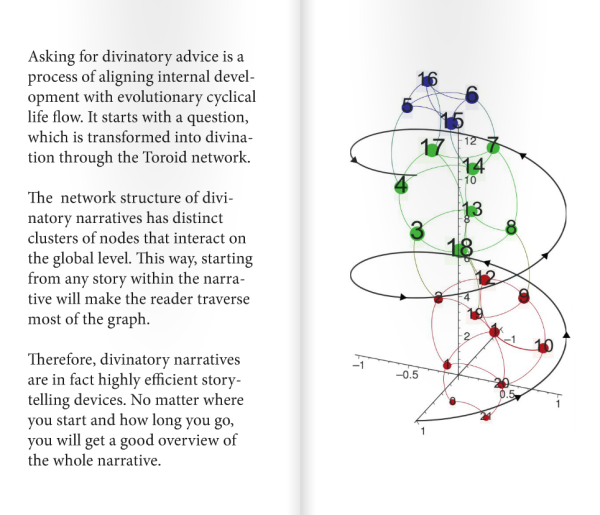A narrative is a sequence of interconnected events/symbols/signs and is the most common byproduct of the human propensity to make sense of things. In this presentation, we argued that some sets of events are more likely to be perceived as more coherent than others.
Specifically, we used our study of divinatory systems, such as Tarot and I Ching, to demonstrate how a knowledge system can be represented as a network graph. We then show that a certain degree of connectivity in this graph based on the relations between the different elements of the knowledge graph makes the whole structure seem more coherent as opposed to a set of unrelated elemens or a densely interconnected network (high entropy).
We then presented a concrete implementation of this methodology to build coherent narratives using a set of scientific and philosophical concepts as an example. This methodology can be applied to any narrative. The basis of the approach is on defining the distinct elements in discourse and then building connections between those elements to cluster them in distinct, globally connected groups. There are also other strategies that could further enrich this methodology.
This research and presentation is a collaboration between Dmitry Paranyushkin (Nodus Labs), Colin Johnco, Sebastian Jaramillo, and Frederic Bayer.
The presentation took place at the Special Agency studio: 3, Am Flutgraben, 12435 Berlin at 18.00.

